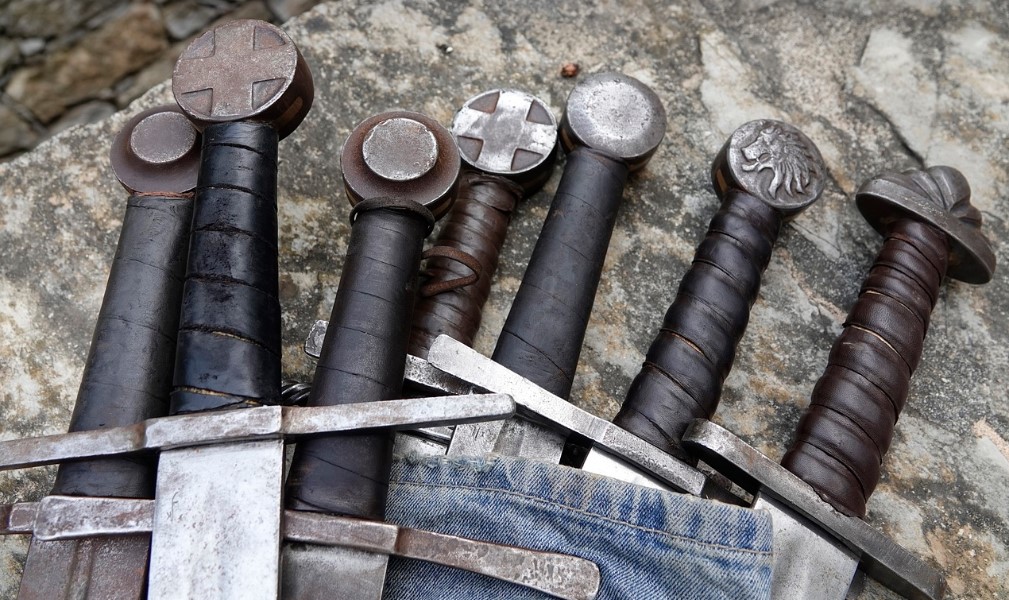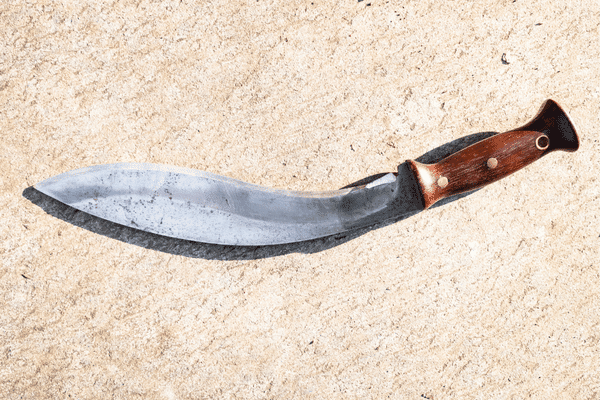Unveiling the Forgotten Blades of Japan: A Comprehensive Exploration.
Japan's martial legacy is synonymous with the legendary katana, yet within the rich tapestry of its sword history lie forgotten gems - straight-edged blades that, despite their significance, remain obscured by the katana's shadow. In this comprehensive exploration, we will journey through the annals of Japanese swordcraft, shedding light on not only the ancestral Chokutō, tactical Tantō, transitional Uchigatana, modern Shin-Guntō, and specialized Yoroi-dōshi but also the graceful Wakizashi and the formidable Nodachi.
1. Chokutō: The Genesis of Japanese Swordcraft
The Chokutō, dating back to the Kofun period, is the bedrock of Japanese swordcraft. Its straight blade and single-edge bevel hint at the foundational principles that would evolve over centuries into the iconic katana. Originating as a practical and ceremonial weapon, the Chokutō showcases the simplicity and functionality that would define Japanese sword design.
2. Tantō: A Blade of Versatility and Tactical Acumen
The Tantō, originally a utility knife, transformed into a versatile weapon wielded by samurai for close-quarters combat. Its short, straight blade made it ideal for both self-defense and daily tasks. As a secondary weapon, the Tanto became an integral part of the samurai's arsenal, highlighting its adaptability and tactical significance.
3. Uchigatana: Bridging Tradition and Innovation
Emerging during the Kamakura period, the Uchigatana represents a transitional phase in Japanese sword design. With a slightly shorter, straighter blade, it balanced cutting power and maneuverability, bridging the gap between the earlier Tachi and the later Katana. The Uchigatana symbolizes the continuous evolution of swordcraft in response to the changing demands of warfare.
4. Shin-Guntō: A 20th-Century Departure
The Shin-Guntō, introduced in the 20th century, marks a departure from traditional Japanese sword aesthetics. With a straight blade inspired by Western military swords, it became a standard-issue weapon for Japanese officers during World War II. The Shin-Guntō exemplifies the adaptability of Japanese swordsmiths during a turbulent period in history, showcasing their willingness to embrace new designs.
5. Wakizashi: The Elegant Companion Blade
Often overshadowed by its longer counterpart, the katana, the Wakizashi holds its own significance. Wielded by samurai as a companion sword, it was versatile in confined spaces and served as a symbol of honor. The traditional daishō pairing, comprising a katana and a Wakizashi, represented a samurai's social status and adherence to the code of Bushido.
6. Yoroi-dōshi: The Last-Resort Armor Piercer
The Yoroi-dōshi, meaning "armor piercer," was crafted during the Kamakura period as a specialized dagger for penetrating armor gaps in battle. Its slender, straight blade and compact size made it a last-resort weapon for samurai. The Yoroi-dōshi's design reflects the strategic ingenuity of Japanese swordsmiths in addressing the challenges of medieval warfare.
7. Nodachi: The Giant Among Swords
The Nodachi, with its exceptionally long and straight blade, stands out as a giant among swords. Designed for battlefield use, it provided a significant reach advantage over opponents. The imposing presence of the Nodachi struck fear into adversaries and showcased the diversity in design and application within the realm of Japanese swords.
Conclusion:
In Japanese swordcraft, the allure extends beyond the iconic katana, encompassing a diverse array of straight-edged blades that have shaped the nation's martial history. From the foundational Chokutō to the tactical Tantō, transitional Uchigatana, modern Shin-Guntō, specialized Yoroi-dōshi, elegant Wakizashi, and formidable Nodachi, each sword tells a unique tale of craftsmanship, innovation, and adaptation. Together, these forgotten blades form a rich tapestry that contributes to the unique and varied heritage of Japanese swordcraft. As we unveil these overlooked masterpieces, we gain a deeper appreciation for the diversity and ingenuity that define the swords of Japan.

.png)



Comments
Post a Comment